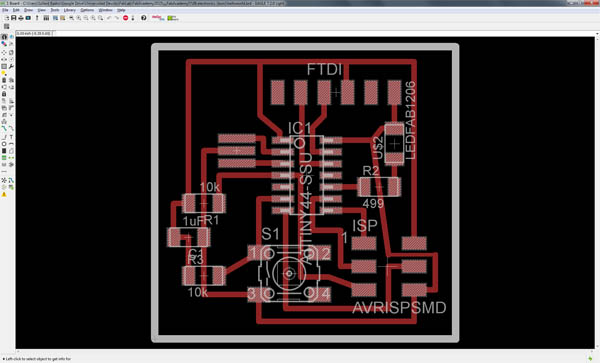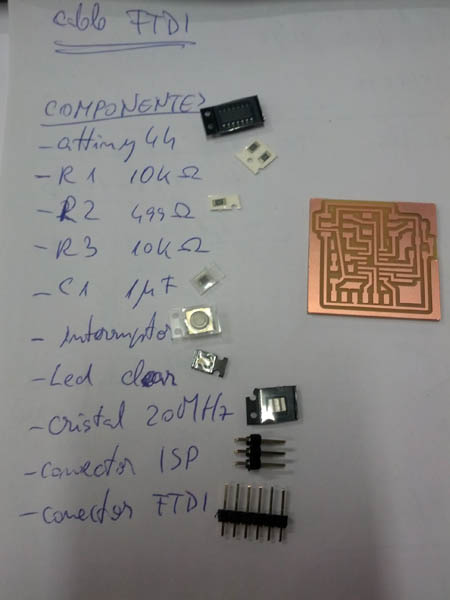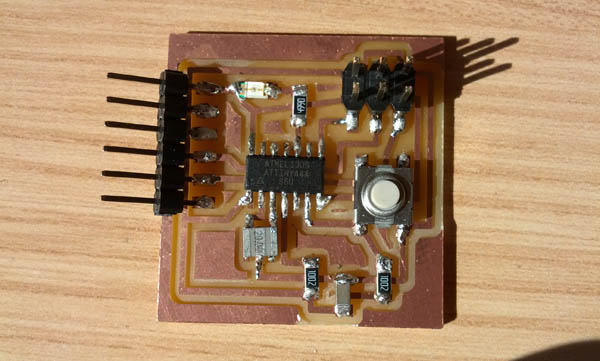Electronics design
Reproduce the HelloWorld PCB with extended features: a LED and a push button. Sounds easy enough for the persons who know electronics, but for me sounded something almost impossible. Since we are learning to make almost anything I had to try and give it a go, none the less it was mandatory.
Relayed heavily on the existent schematics I have managed to redraw them in Eagle and add the extra components required. Connecting all the pins on the board was a little bit trickier, not because of lack of my knowledge in electronics, but because of the many pins to be interconnected without intersecting each other. It was more like a puzzle. A well made puzzle. Since I love to solve riddles and have 3D vision it was more like a game to connect correctly everything on the board.
First try was a fail and couple of pins of the microcontroller, resonator and the FTDI connector remained unconnected. I made such a "mess" that even with a bridge wouldn't be able to connect them. Simply it wasn't room enough. The second try was much better, since I intended to connect everything systematical and without a bridge. Everything turn out nicely on a 30x30 mm board approximately.


The milling process was smooth, without any broken end-mills incident, and the PCB turned out quite nicely. I had some problems cutting the board because of some "details". Eagle exports the files black on white and the cut out part had to be inverted. I have uploaded the *.png file to the FabModules, invert it and save it. Importing this file to a local FabModules and send it to the Modela it started to do weird thing: going crazy with the X and Y axis. Restart, reset, nothing seemed to work and didn't wanned to start cutting out the board where was needed. The Modela kept going outside of the board and had to stop it. Finally I have noticed the file size, what was 20x bigger than my actual board. Resized the file and the cut was a perfect cut. This issue happened because of the save as file from the FabModules after inverting the it. Small detail, but it can have huge setback in time.
From there I had to sort out all the components to be packed on the board. The existent components on the initial HelloWorld board where easy to find, but with the LED and his correspondent resistance I had to make some math: resistance needed. Taking in consideration a clear red LED from DigiKey (160-1167-1-ND) I have calculated 320 ohm to be needed for the LED to function properly. If this resistance is lower than the calculated value the LED would take more current and it can break. I took a 499 ohm resistance (just in case and on hand) and calculated the luminosity of the LED with this resistance what gave me a 64% of luminosity. I can live with that.

The soldering part was kind of tricky one because of the lack of space, haven't thought about it when drawing the board. My resonator was quite close to the microcontroller, and a path was quite close to the FTDI connector, so close than the pins of the connector where touching it. I have overcome this mistake of mine by soldering the connector in angle. This issue is updated in the downloadable file.



